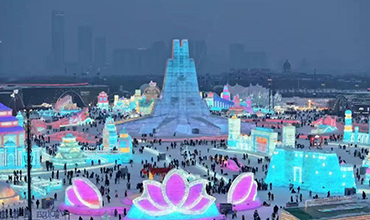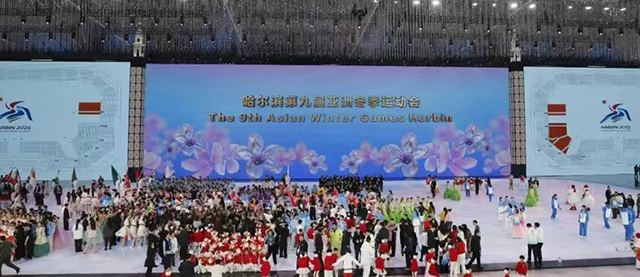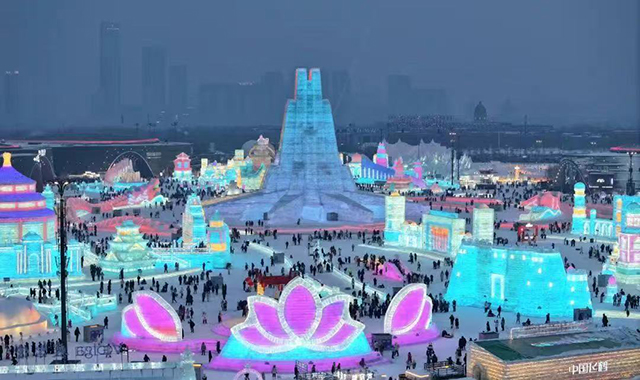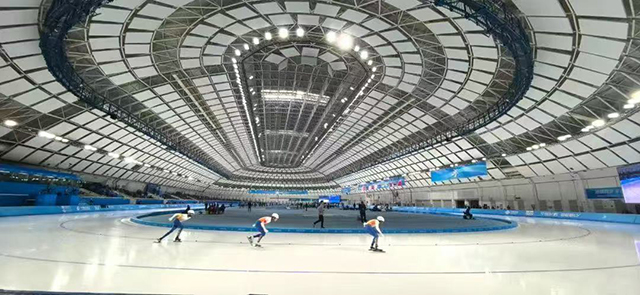


The 9th Asian Winter Games (AWG), which recently concluded in Harbin, has been widely praised by the international community as a highly successful event. So, what was the key to its success?
On March 7, during an open delegation session at the 14th National People’s Congress (NPC), Wang Hesheng, Mayor of Harbin and a National People's Congress representative, addressed this question. He highlighted three key features of this year’s AWG, with the foremost principle being:
"Simplicity, Safety, and Excellence" - The event was efficiently organized without excessive demolition and reconstruction. By prioritizing resource optimization and sustainable planning, Harbin delivered a world-class sports event while ensuring long-term economic and cultural benefits.

On March 7, Wang Hesheng, National People's Congress representative and Mayor of Harbin, attended the open delegation session of the Heilongjiang Provincial Delegation at the 14th National People's Congress (NPC) Third Session. Source: Dongbei Net
On February 14, the 9th Asian Winter Games (AWG) successfully concluded in Harbin. According to Xinhua News Agency, China upheld the principles of "green, shared, open, and clean" event organization. With world-class venues and outstanding organizational services, the event received widespread praise from the Olympic Council of Asia (OCA) and the international community. The Chinese sports delegation secured 32 gold medals and 85 total medals, placing first on both the gold medal and overall medal tables.
Speaking at the open delegation session of the Heilongjiang Provincial Delegation on March 7, Harbin Mayor Wang Hesheng reflected on the event’s achievements. He emphasized that the Games were successfully organized within just 580 days from the bid to the opening ceremony, a remarkable feat given the scale of the event. With 34 countries and regions sending over 1,200 athletes, this edition of the AWG saw the largest participation in its history. Additionally, the high reuse rate of existing venues made it one of the most sustainable and efficiently managed Winter Games to date.
Praising the event’s success, Timothy Fok, First Vice President of the Olympic Council of Asia, stated, "My colleagues and I unanimously believe that the 9th Asian Winter Games in Harbin is the most successful AWG ever."

The Harbin Asian Winter Games set a new record for the highest number of participating countries/regions and athletes in the history of the event.Source: WeChat Official Account "Harbin Release".
Wang Hesheng stated that the successful hosting of the Asian Winter Games was attributed to three key factors. First, the strong leadership and thorough planning by the Heilongjiang Provincial Party Committee and Government, which, following the directives of the Central Government, mobilized resources effectively, conducted comprehensive assessments, and maintained strict oversight, with unwavering support from central ministries and national agencies. Second, the province’s continued focus on improving governance and administrative efficiency, which fostered a highly capable and disciplined team to ensure smooth execution. Most importantly, the success was made possible by the enthusiastic participation and dedication of Harbin’s citizens, who wholeheartedly supported, served, and contributed to the Games. Acting as proud hosts, they, along with various social organizations and enterprises, played a crucial role in showcasing Harbin’s open, inclusive, and confident city image to the world.
No new venues were built, with a strong emphasis on post-event utilization.
Harbin Mayor Wang Hesheng outlined three defining features of the 9th Asian Winter Games, emphasizing efficiency, safety, and excellence in its planning and execution.
The first key principle was “simplicity, safety, and brilliance.” Unlike other large-scale events, Harbin’s AWG avoided excessive demolition and new construction, instead opting to renovate and upgrade existing venues without building new ones. Special attention was given to post-event utilization to ensure long-term benefits. For example, the main venue for the opening and closing ceremonies, originally a convention and exhibition center, was upgraded to accommodate trade fairs, commercial performances, sports competitions, and recreational activities after the Games. The secondary venue, set in the iconic Harbin Ice and Snow World, featured the main torch tower “Snow Charm Lilac”, which artistically blended ice and snow with Harbin’s city flower, the lilac, making it a cultural and tourism landmark as part of the AWG legacy.
The opening and closing ceremonies followed a minimalist yet captivating approach, with a streamlined cast of fewer than 1,000 performers and no celebrity appearances. Instead, the focus was on craftsmanship and artistic creativity, ensuring a memorable, high-quality presentation that was thoughtfully executed rather than extravagant-simple yet sophisticated, economical yet spectacular.

The opening and closing ceremony sub-venue of the Harbin Asian Winter Games was set in Ice and Snow World. Source: WeChat Official Account "Harbin Release".
Streamlined Games Without Compromising Service Quality
Harbin’s simplified approach to hosting the Asian Winter Games did not come at the expense of service quality. According to Mayor Wang Hesheng, the second key feature of this year’s AWG was enhanced event service and logistical support. The city upheld high standards in every aspect of event planning, including transportation, accommodation, dining, medical services, security, financial transactions, power supply, communication, weather monitoring, and environmental protection.Over 5,800 competition-side volunteers and more than 20,000 city-side volunteers worked tirelessly to provide warm, attentive, and meticulous services. Their efforts were widely recognized by athletes and officials
Visitors Praise a Cleaner, More Welcoming Harbin
Large-scale international sporting events often leave host cities burdened with massive debt, a global challenge Harbin managed to effectively avoid.
Beyond the simplified approach to hosting, Wang Hesheng highlighted a third key feature of this year’s AWG: seamlessly integrating event organization with urban development and public expectations. The Games not only elevated Harbin’s global reputation but also enhanced the city’s infrastructure and cleanliness, earning praise from both locals and visitors.

The Harbin Ice Hockey Arena served as the venue for ice hockey at the Asian Winter Games. Source: WeChat Official Account "Harbin Release".
According to Mayor Wang Hesheng, Harbin’s citywide efforts to improve its urban environment received praise from visitors, who noted the city had become cleaner and more orderly. Meanwhile, for the opening and closing ceremonies, torch relay, and sporting events, Harbin adopted a balanced approach by ensuring comprehensive management and smooth traffic flow to minimize disruptions to daily life.
"From the Beijing Winter Olympics to the Harbin Asian Winter Games, China's enthusiasm for winter sports has spread across the nation, bringing new energy to global ice and snow sports," said Wang Hesheng. Looking ahead, Harbin aims to leverage the "post-AWG effect" to drive the high-quality development of winter sports, stimulate the ice and snow economy, and create new highlights in service consumption and economic growth.